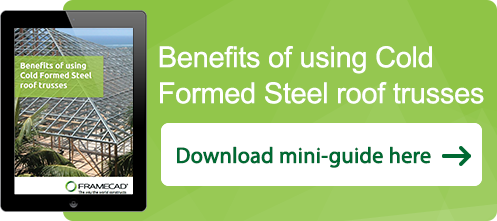
In Kenya, the construction sector is grappling with cost escalation after the government late February imposed a three-month ban on logging.
Sawmills and some construction sites have gone quiet while timber has seen sharply increased prices owing to the scarcity.
The ban also saw timber and logs movement permits suspended indefinitely across the country leaving dealers stuck with freshly cut logs lying in the forests and private plantations uncollected.
Construction sites in Nairobi are either paralysed or having to pay double for timber. "We are under strict instructions not to allow movement of any log, not even Eucalyptus poles used by the construction industry, or any forest products needed by wood products manufacturers for the next three months,” said Thakara Nithi Forest Ecosystem Conservator, Benjamin Kinyili. For more information read more here.
Dependency on wood is becoming an ongoing issue. The level of uncertainty in sourcing raw material for construction companies has pushed them to rethink their choice in construction methods.
This official ban is affecting all timber construction products such as timber trusses. This has created the need for the Kenyan construction industry to explore alternatives such as Cold Formed Steel design and build solutions.
It is clear that Cold Formed Steel (CFS) and the FRAMECAD system offers a real competitive advantage to quickly overcome the current Kenyan logging ban and establish stability for Kenyan construction industry in the future.
CFS trusses can solve the problem of sourcing timber whilst saving money, and time in countries such as Kenya where sourcing timber is becoming increasingly difficult and expensive.
Applicable to a wide range of building projects, anywhere
CFS trusses are widely used in projects of various size and shape around the world. Be it a multi-storey building, a hotel, a corporate office building, an academic institution, or a healthcare facility, CFS roof trusses are virtually unlimited in application.
As we explain further in the mini-guide, CFS trusses have been used in many locations in the world for different reasons. They’ve consistently proven superior and more resilient to wood-built trusses and they are now commonly used in both residential and commercial buildings.
Our mini-guide explains many of the types of roofs and trusses that are achievable using CFS.

Better than wood, in more ways than one
CFS is not subject to many of the problems encountered with timber in construction. CFS roof trusses are stronger and of consistent quality, designed with high accuracy with advanced software, more complex designs can be achieved.
In addition, CFS trusses are designed and prefabricated with extreme precision. After specification with our FRAMECAD process, each part is built exactly as needed and expected.
Finally, wood is subject to damage from weather conditions such as rain. Particularly during the erection phase, this can cause costly delays.
Practically any type of roof can be built with CFS trusses
Roofs made of CFS trusses can fit any type of building. No matter the planned roof shape, CFS trusses can be designed and manufactured to achieve it. They can be fabricated to meet the requirements (including roof load) of large choice of roof shapes, whether it’s a common hip roof, double fink, queen post or a mono-pitched roof. This guide will also review the back to back vs inline trusses and the benefits of each design style.
Not only will CFS solve the sourcing issue in Kenya, it will enable Kenyan building companies to keep project timelines on-track, deliver consistent quality and offer endless possibilities in applications.







